- Being a nurse involves much communication;
- all people have different personal interests;
- conflicts between patients and nurses are inevitable;
- patients may pretend not to understand nurses;
- customers may leave ungrounded complaints.
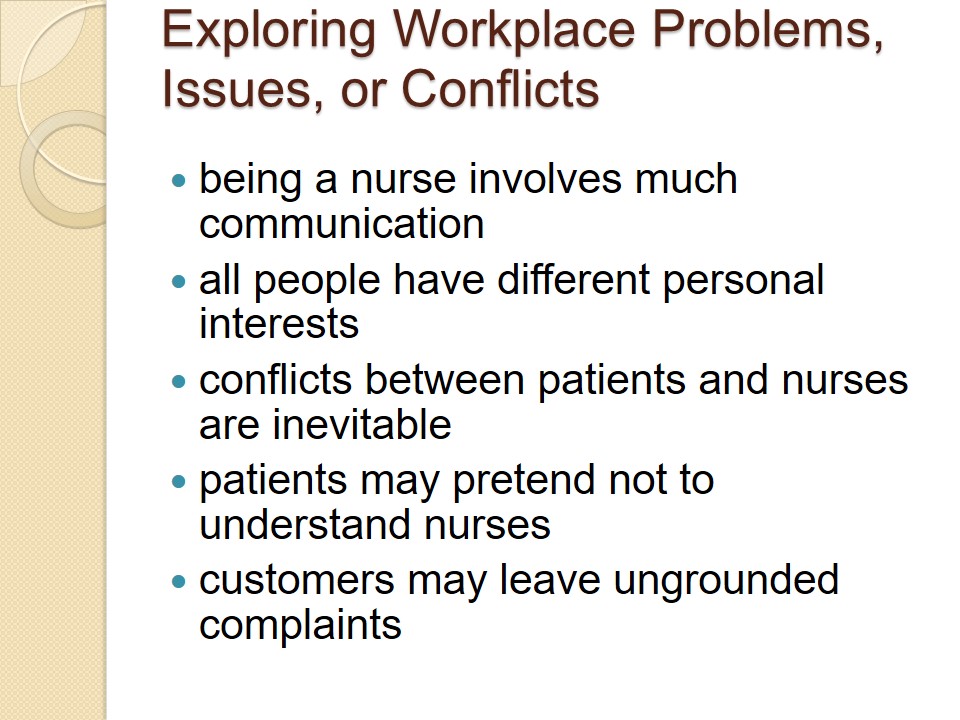
Situational Leadership
- One of the most commonly used models;
- its impact and effectiveness boosts its popularity;
- business environments become intense and densely populated;
- a need for a more adaptive leadership;
- in the 1960s, SL model was launched.
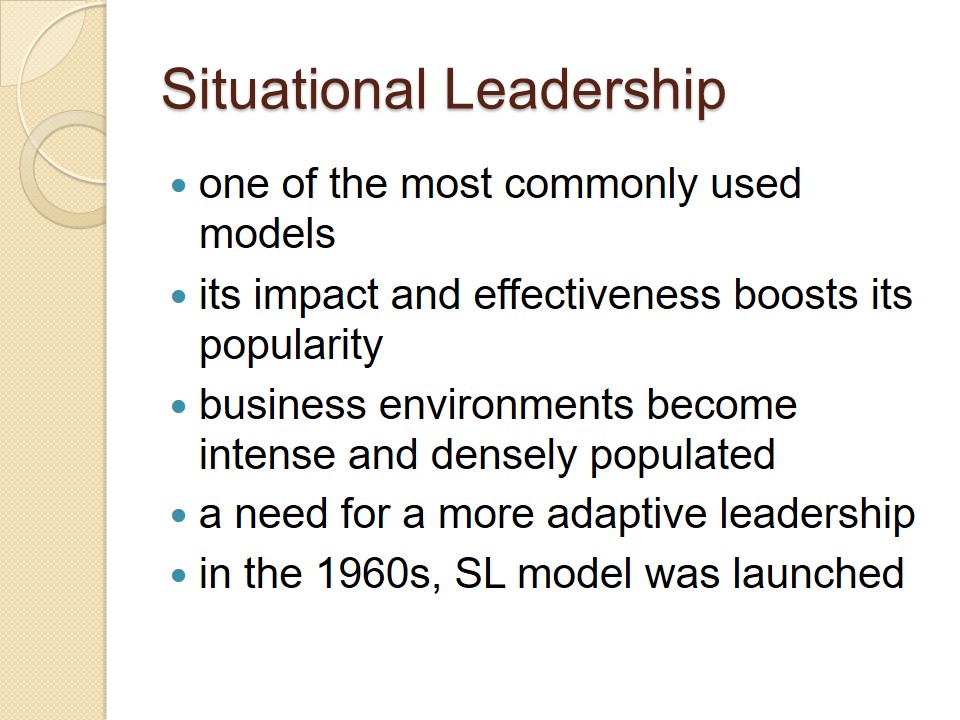
Dr. Paul Hersey’s Legacy
- Developed SL to enable leaders’ impact;
- leaders could influence the employees more effectively;
- based his model on evaluation of factors;
- outlined four styles: telling, selling, participating, delegating (Dems, 2010);
- leader decided which style was most suitable.

SL Model 1: Telling and Directing
- Leader gives the tasks to subordinates;
- effective for inexperienced or first-time employees;
- close supervision of new employees is necessary;
- inexperienced subordinates learn under leader’s control;
- employees are dedicated to reaching their goals (Dems, 2010).
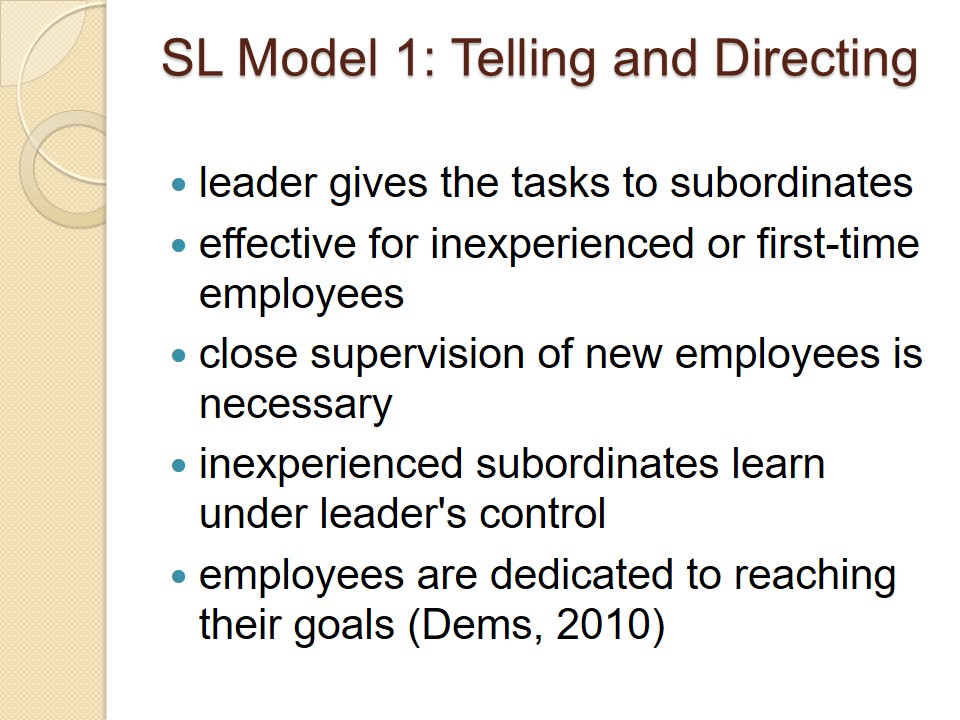
SL Model 2: Selling and Coaching
- Leader is still responsible for defining tasks;
- leader listens to subordinates’ suggestions and ideas;
- communication process stops to be one-sided;
- for employees having experience but lacking self-esteem;
- leaders may provide encouragement and support (Dems, 2010).
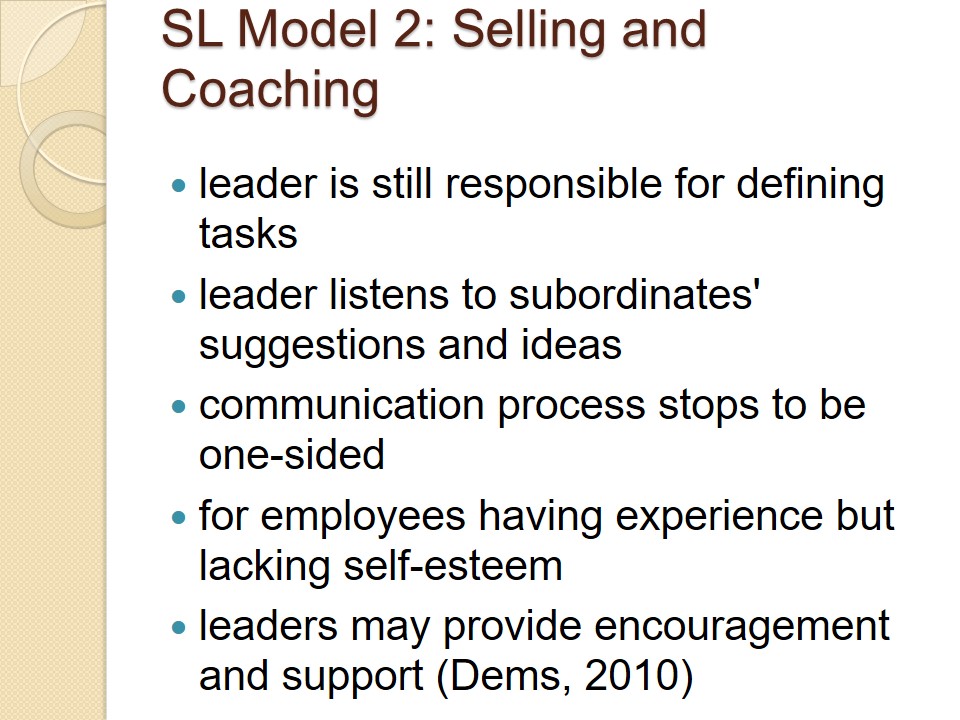
SL Model 3: Participating and Supporting
- Maximum control is given to the subordinates;
- leader performs minimal supervision over the employees;
- leader assigns tasks allowing freedom in performance;
- most effective for the experienced employees;
- for those who lack motivation and self-esteem (Dems, 2010).
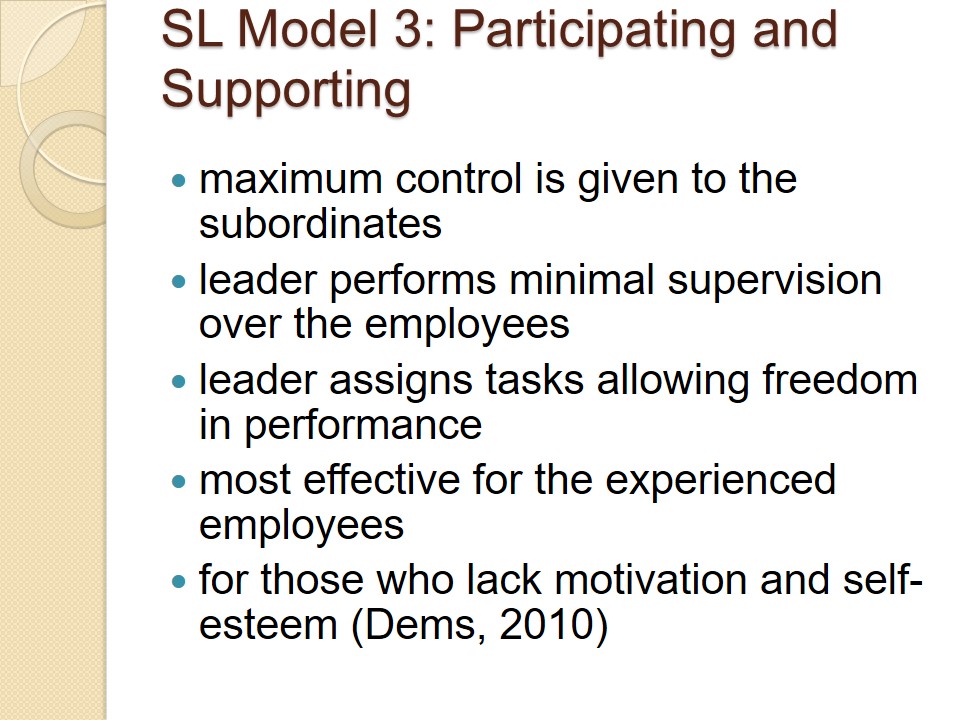
SL Model 4: Delegating
- Leader is still related to decision-making process;
- employees perform the delegation of the tasks;
- suitable for experienced and competent subordinates;
- general goal is set by leader;
- Subordinates have a lot of freedom (Dems, 2010).
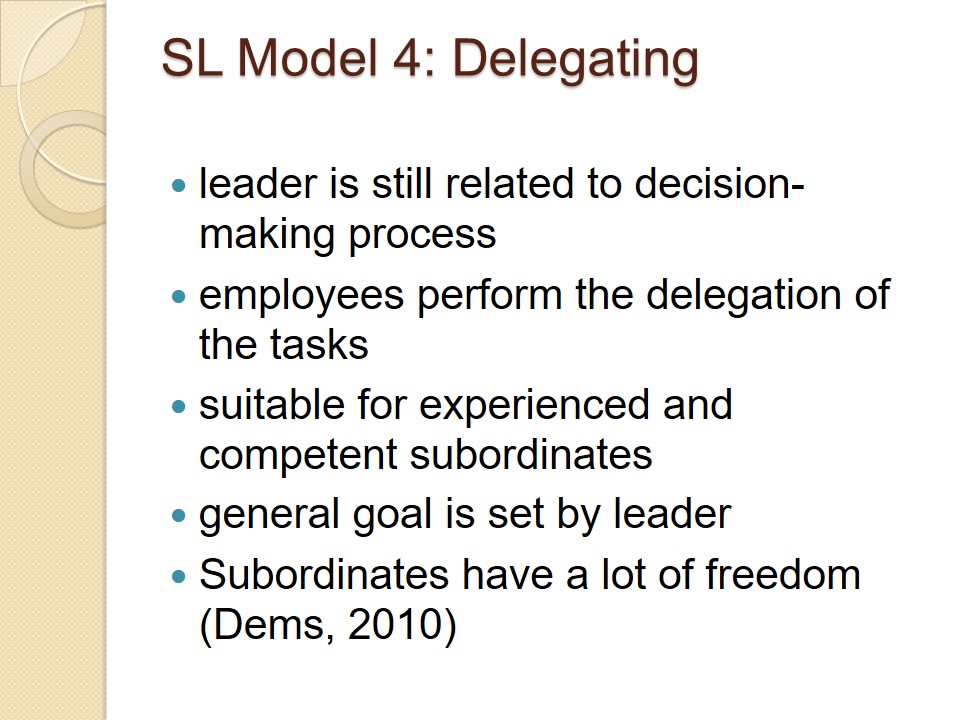
Hersey-Blanchard Theory
- Hersey’s model plus contribution of Ken Blanchard;
- guidance for this theory involves several steps;
- priority tasks should be identified;
- the followers’ abilities are assessed;
- employees’ readiness to perform the duties is checked (“The situational leadership model,” n.d.).
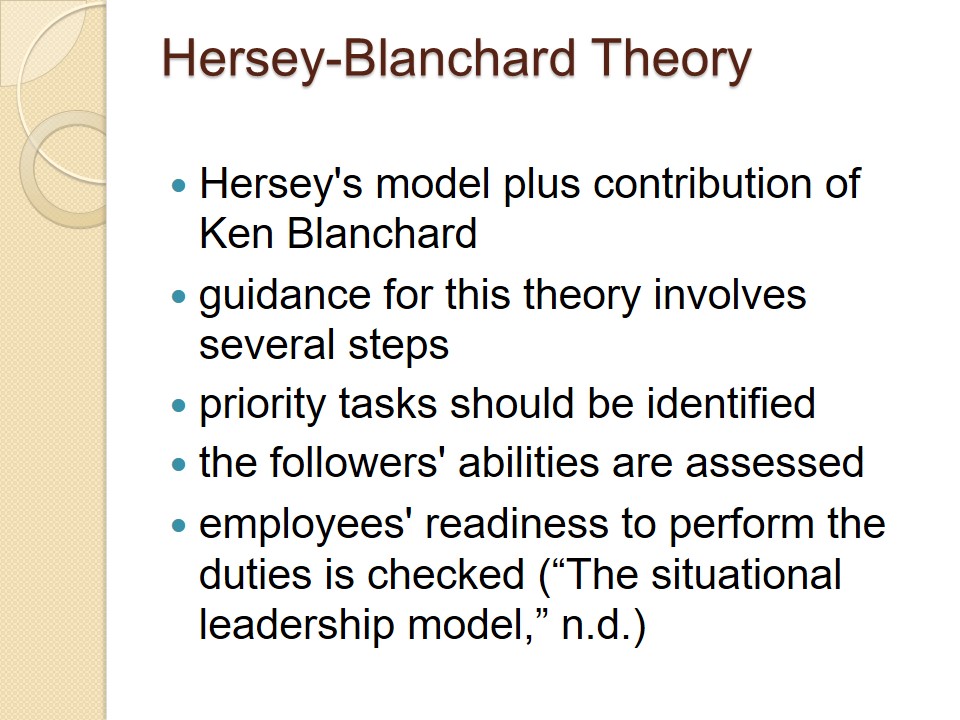
ST in Action
- Leaders work with two kinds of employees;
- experienced professionals and newly recruited interns cooperate;
- leadership style depends on need for supervision;
- leader may switch between delegating and directing;
- style depends on subordinates’ level of experience.
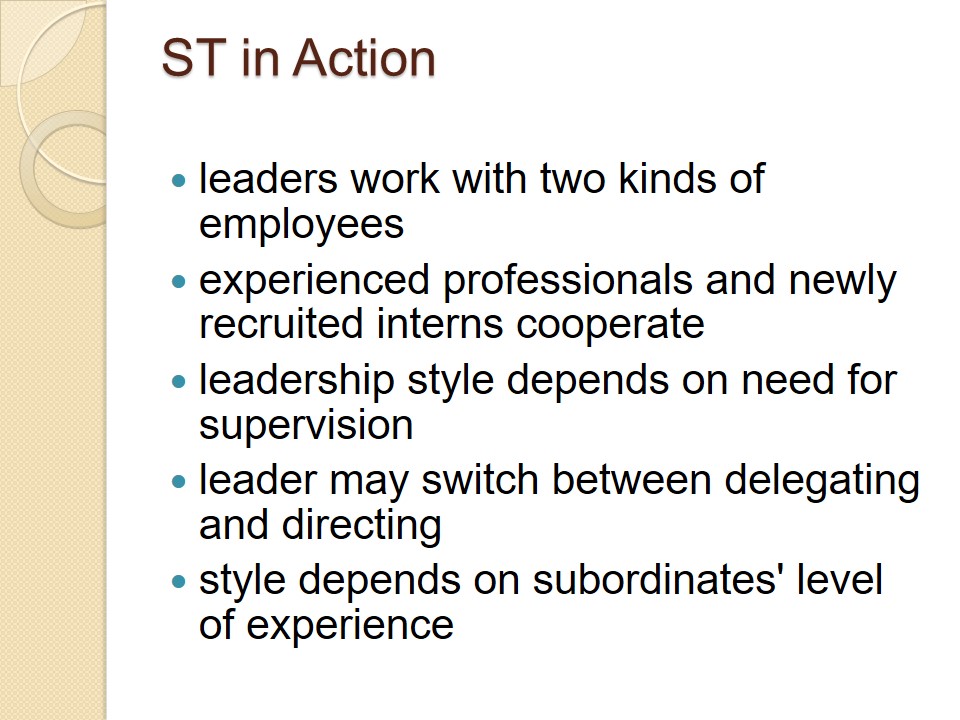
Limitations of SL
- Cannot be applicable to all leaders;
- in situations involving task complexity, is unsuitable;
- when tested, did not justify the predictions (“Hersey-Blanchard situational leadership theory,” 2016);
- very brief definitions of styles;
- does not fit many of unique scenarios (McCleskey, 2014).
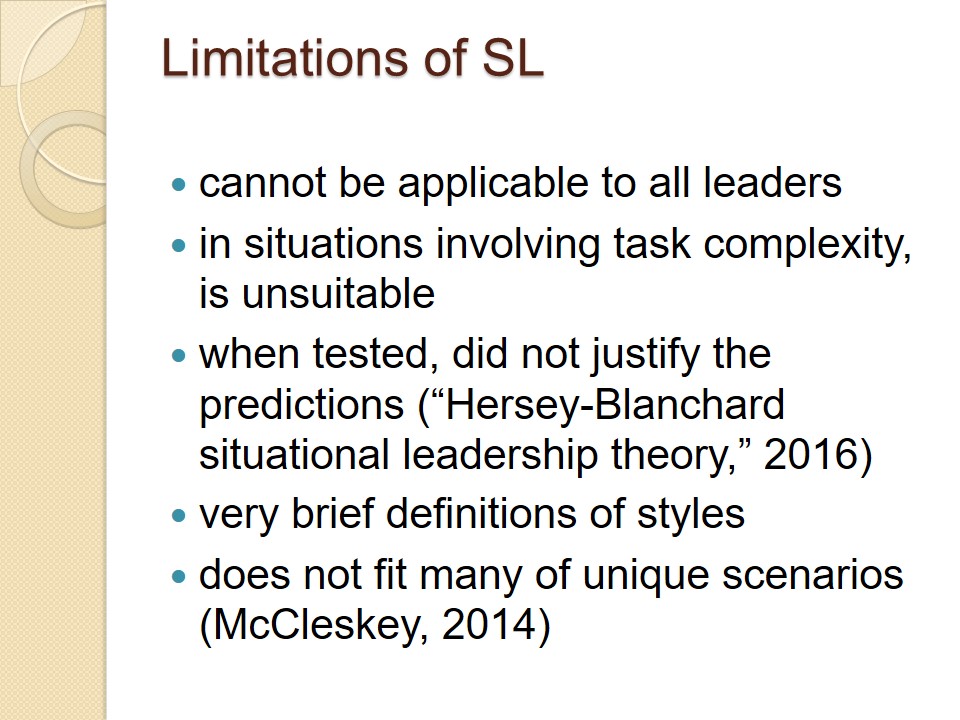
Understanding a Leadership Style and Power
- There is no optimal leadership style;
- leader should choose the appropriate behavior type (Hersey & Blanchard, 1969);
- however, theory is popular among managers;
- theory is used to resolve problematic situations;
- SL is effective for new employees’ integration (Lorinkova, Pearsall, & Sims, 2013).
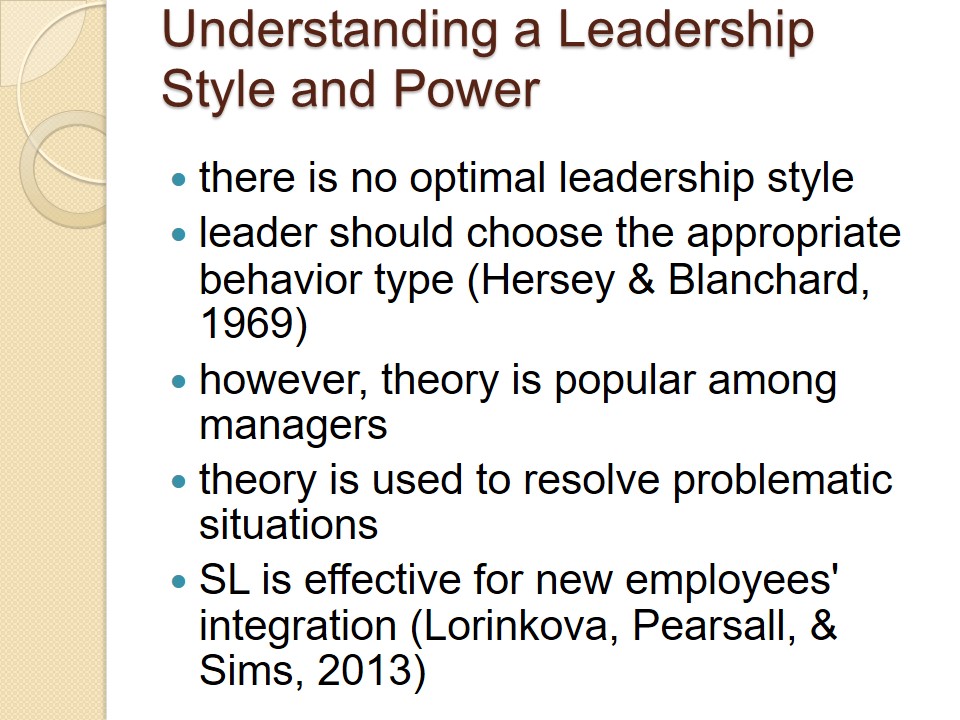
Four Levels of Readiness
- Readiness describes employees’ competence and attitude;
- enthusiastic beginner (D1): low competence and high motivation;
- disillusioned learner (D2): low competence and low motivation;
- capable but cautious contributor (D3): high competence, low motivation;
- self-reliant achiever (D4): high competence and high motivation (Dugan, 2017).

Four Types of Leadership Behavior According to SL Theory
Different levels of readiness require different behaviors:
- directive (S1): low-supportive, high-directive (for D1 employees);
- coaching (S2): high-supportive, high-directive (for D2 employees);
- supportive (S3): high-supportive, low-directive (for D3 employees);
- delegating (S4):low-supportive, low-directive (for D4 employees) (Thompson &Glasø, 2015).

Four Bases of Power
Each leadership style requires a power base:
- S1: coercive power: sanctions and punishment system;
- S2: connection power: no perceived connection/ sanctions;
- S3: reward power: system of rewards/ bonuses;
- S4: expert power with exertive knowledge providing (Hersey, Blanchard, &Natemeyer, 1979).
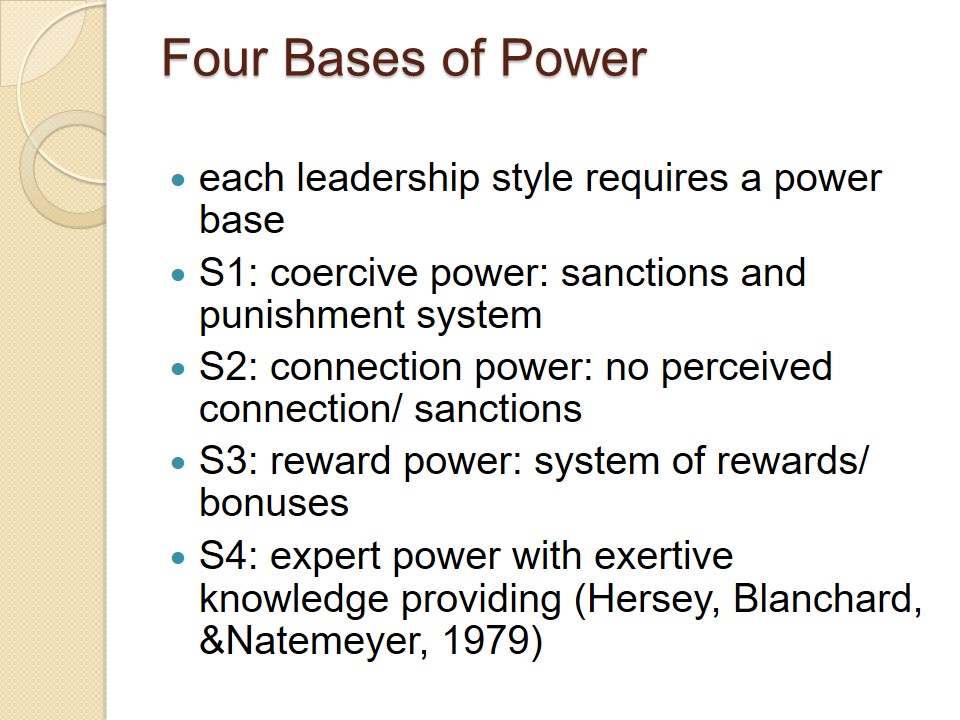
Integration of a New Employee: Readiness Level
- Determining employees’ readiness helps choosing leadership styles;
- former students have enthusiastic beginner level;
- people who changed a job are D1;
- new workers have high levels of motivation;
- new employees have high expectations from work.
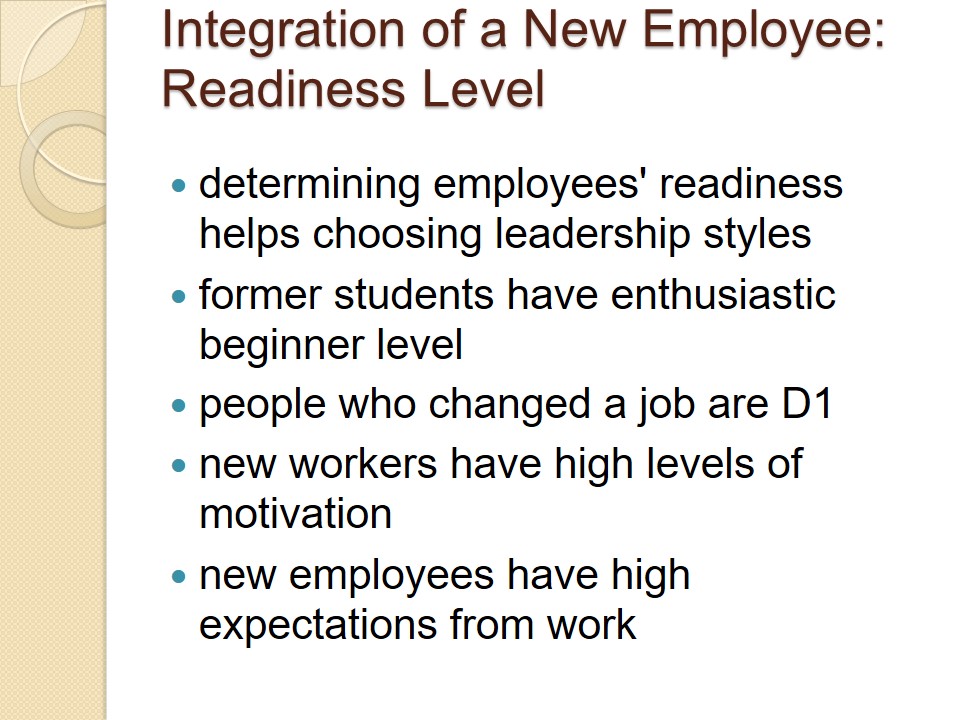
Integration of a New Employee: Leadership Style
- Directive style: most appropriate for D1 readiness;
- leader gives clear instructions and defines roles;
- communication should be one-way and directive;
- leader directs working process to avoid mistakes;
- until employees gain experience, leader supervises them.
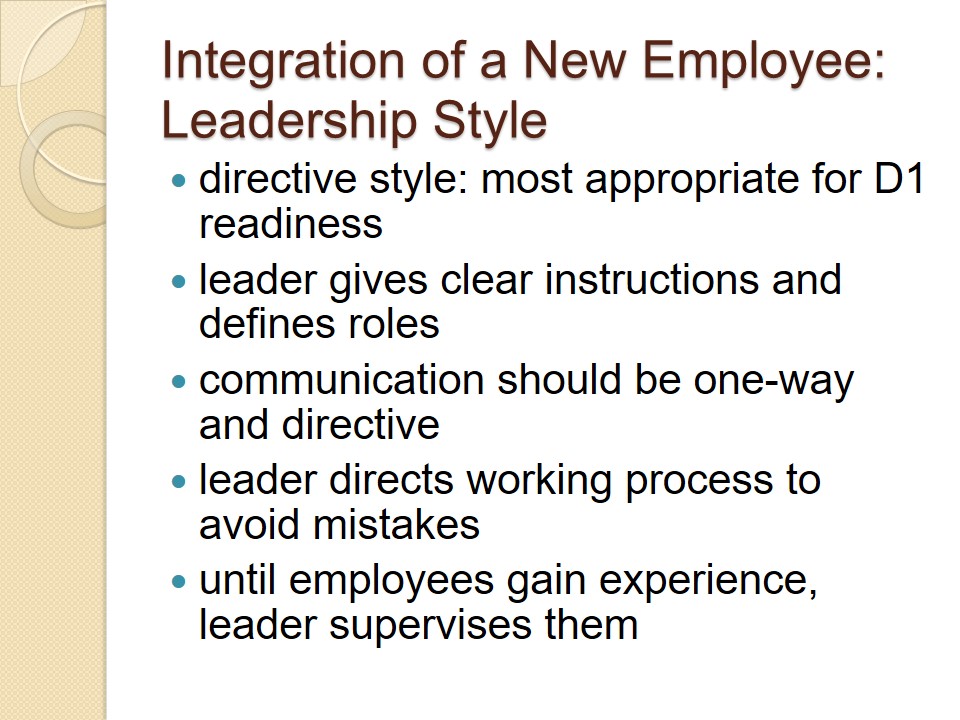
Integration of a New Employee: Power Base
- Coercive power base: suitable for directive leadership;
- this power allows punishment for ill performance;
- workers should realize the leader’s role;
- coercive power enables leader’s power attainment/ development;
- employees need to understand that misbehavior is reprimanded (Hersey et al., 1979).
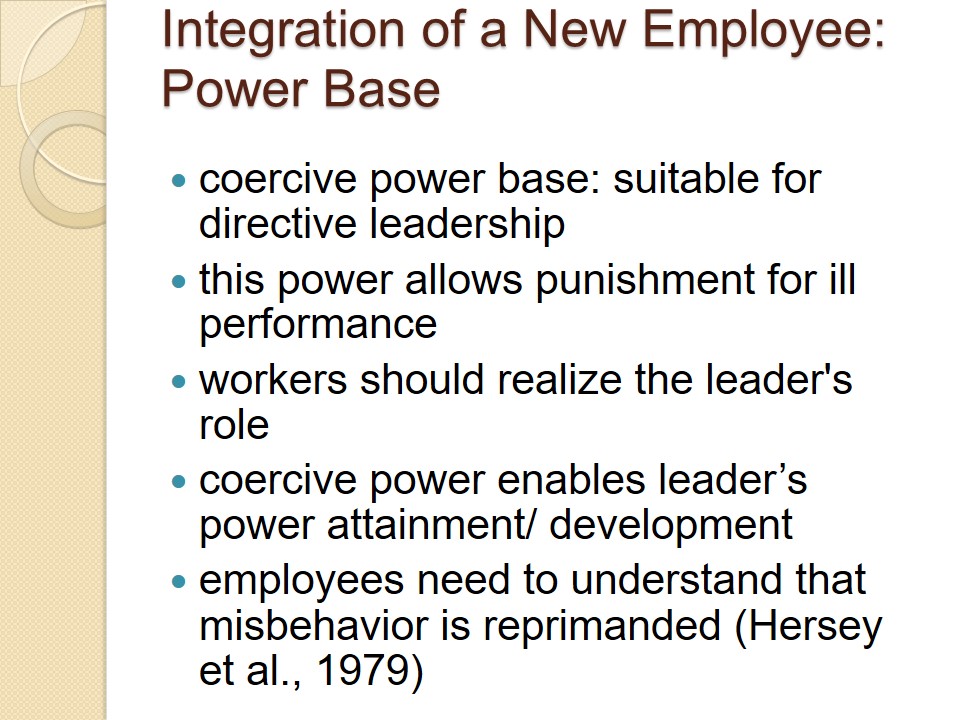
Integration of a New Employee: Performance Readiness Enhancement
- Coercive power leads to the readiness enhancement;
- at next stage, employee reaches D2 readiness;
- because of punishments, job satisfaction decreases;
- workers become more competent but less motivated;
- leadership should be changed to S2 (coaching) (Meier, 2016).
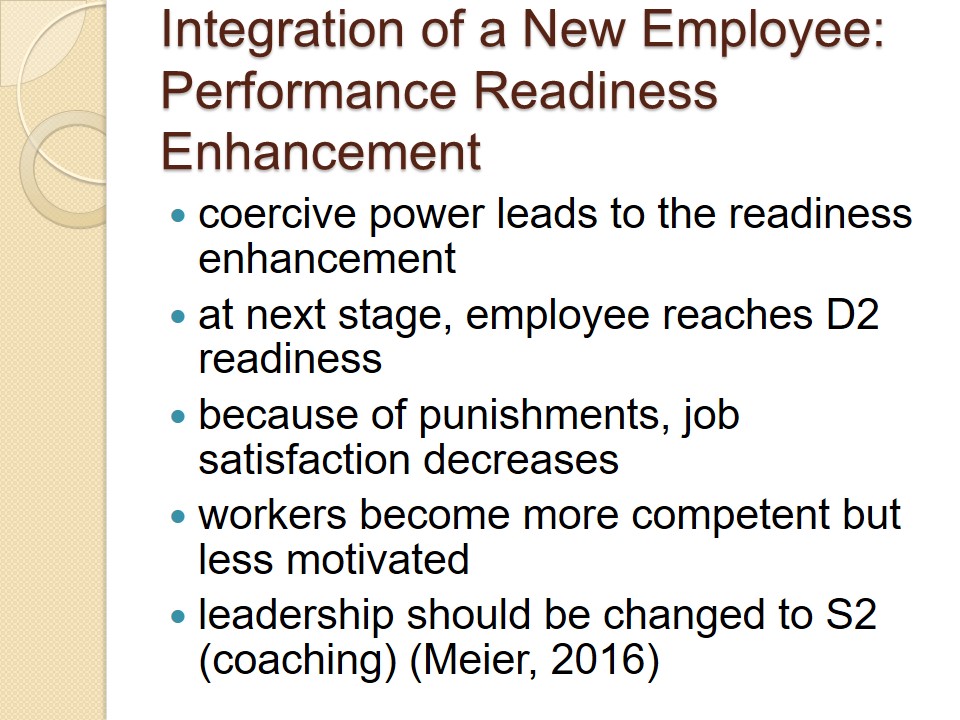
Embracing Technology
- Patient safety is a crucial issue;
- numerous enhancements for patient safety have been suggested;
- effective tools: surveillance systems, electronic health records;
- patient safety is not at desired level;
- innovative technologies may be difficult to master.

Bring Your Own Device (BYOD): Benefits
- An effective suggestion for nurses;
- employees can use their own mobile devices;
- nurses feel more confident using their devices;
- there is more control over computing environment;
- nurses can provide better patient surveillance (Guyton, 2017).
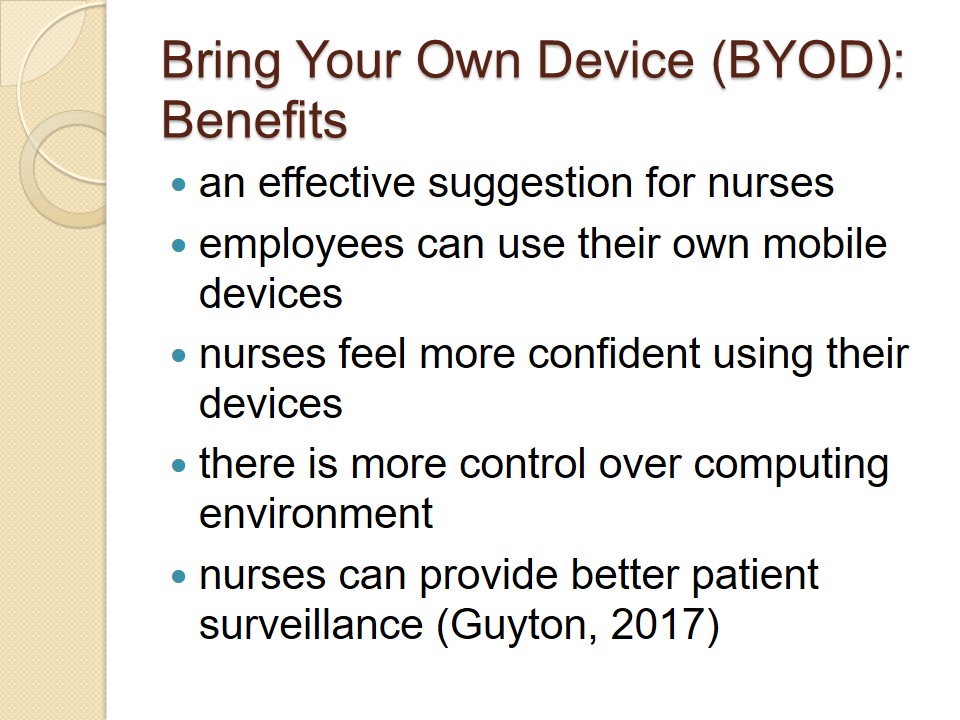
BYOD: Limitations
- Nurses should care about confidentiality issues;
- challenges for it departments: organizing software platforms;
- organizations lose some control over IT use;
- difficulties may occur concerning the data ownership;
- problems concerning data when an employee leaves (Guyton, 2017).
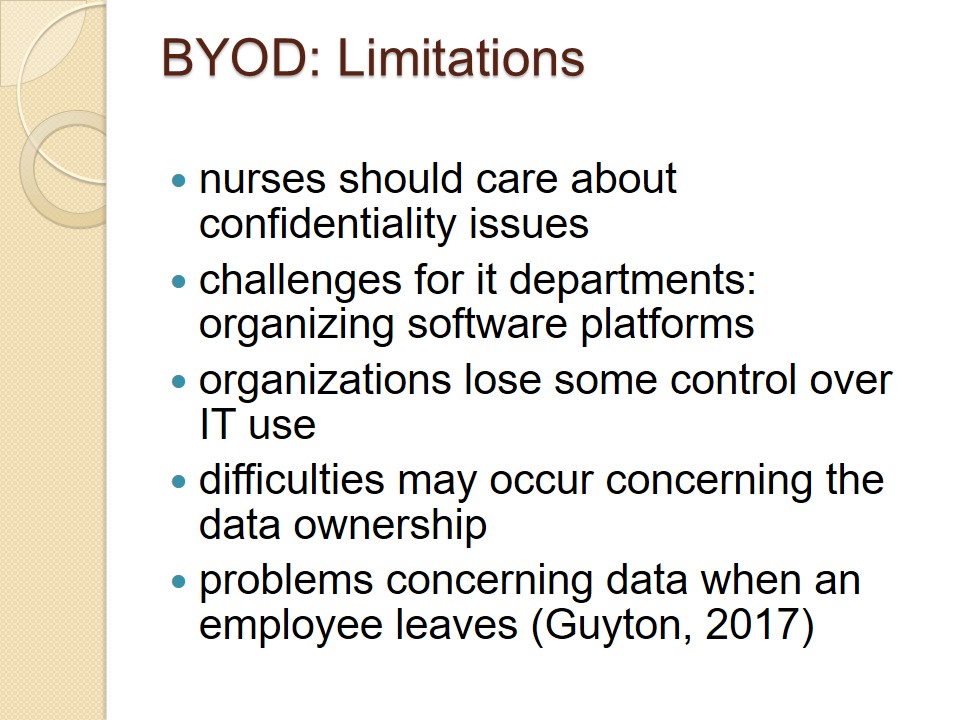
Proprietary Devices: Common Difficulties
- A need for training the employees may arise;
- devices misused: a threat to patient safety;
- device employment may require too much time;
- not all hospitals can afford such technologies (Guyton, 2017).
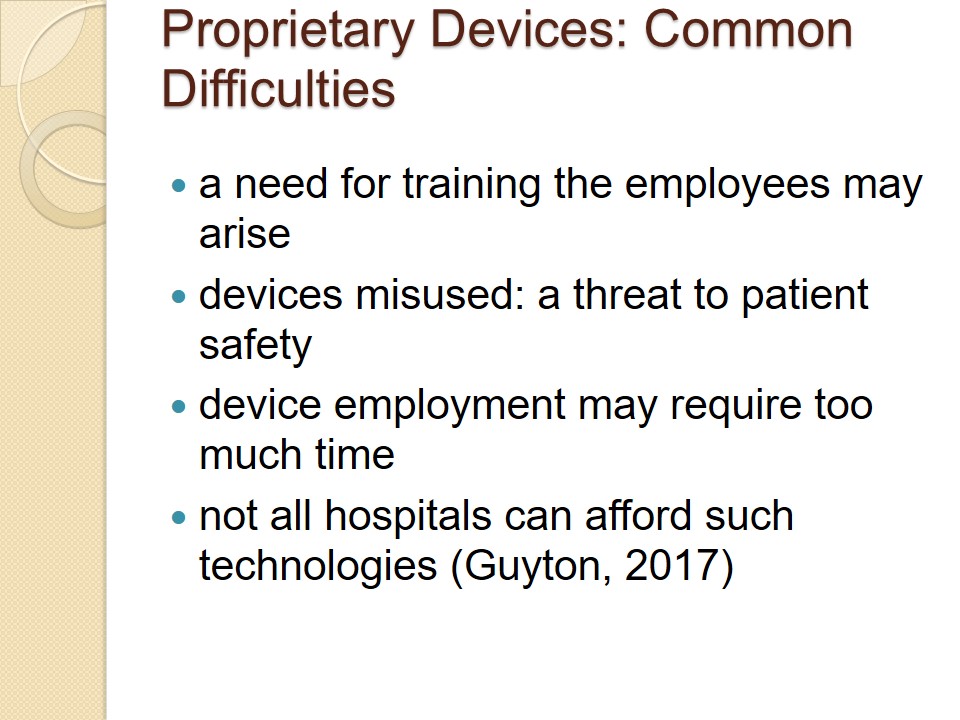
BYOD: Assistance with the Problems
- Using personal devices: easier than proprietary ones;
- no need to spend time on training;
- improvement of nurses’ performance enhances patient safety;
- possibility of carrying devices gives more benefits;
- using personal devices increases employees’ job satisfaction.
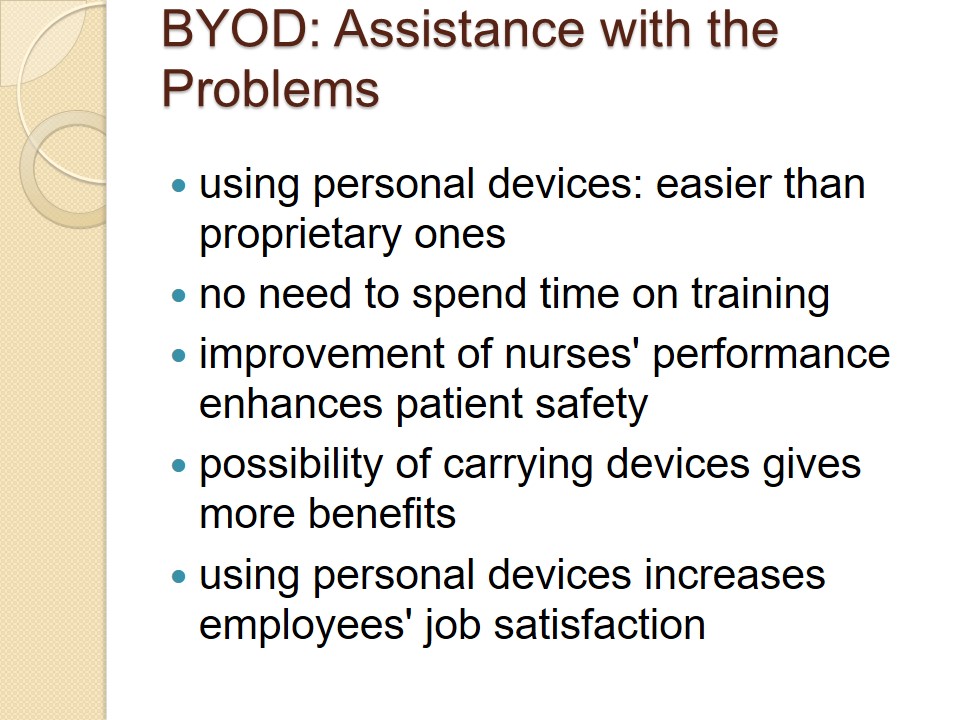
Conclusion Remarks: Leadership and Conflict Situations
- It is necessary to choose appropriate style;
- suitable management encourages and motivates employees;
- in conflict situations, one should stay calm;
- customers’ demands should not impact nurses’ decisions;
- cooperation between leaders and subordinates benefits everyone.
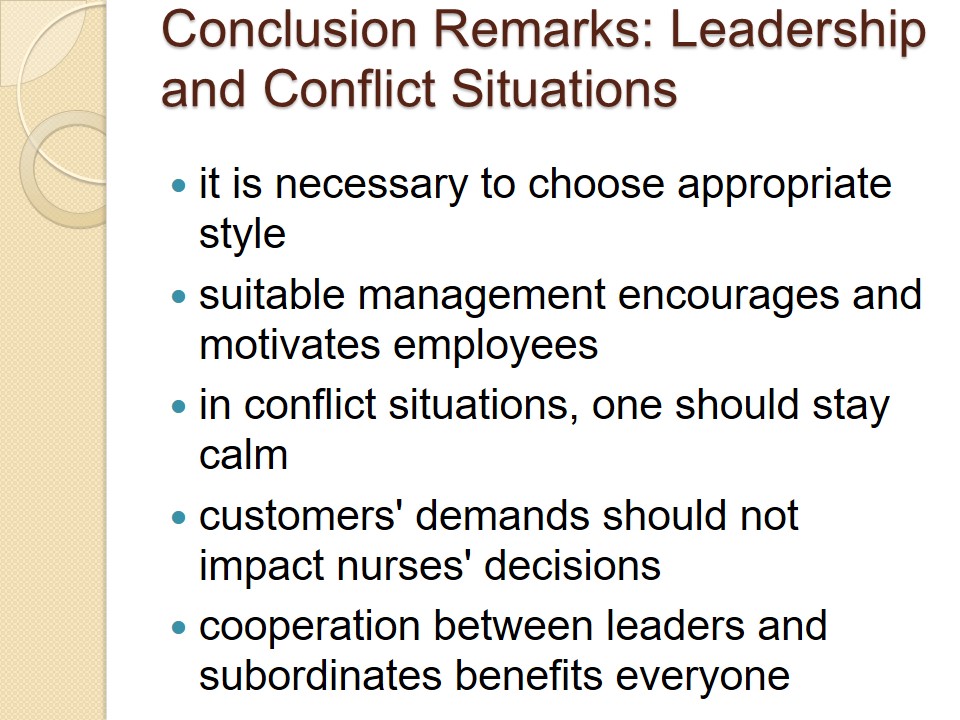
Conclusion Remarks: Technology Improvements
- Devices help to keep records in order;
- technologies allow to arrange data faster;
- BYOD enables nurses to feel more confident;
- advantages of BYOD outnumber the limitations;
- job satisfaction is higher with BYOD.
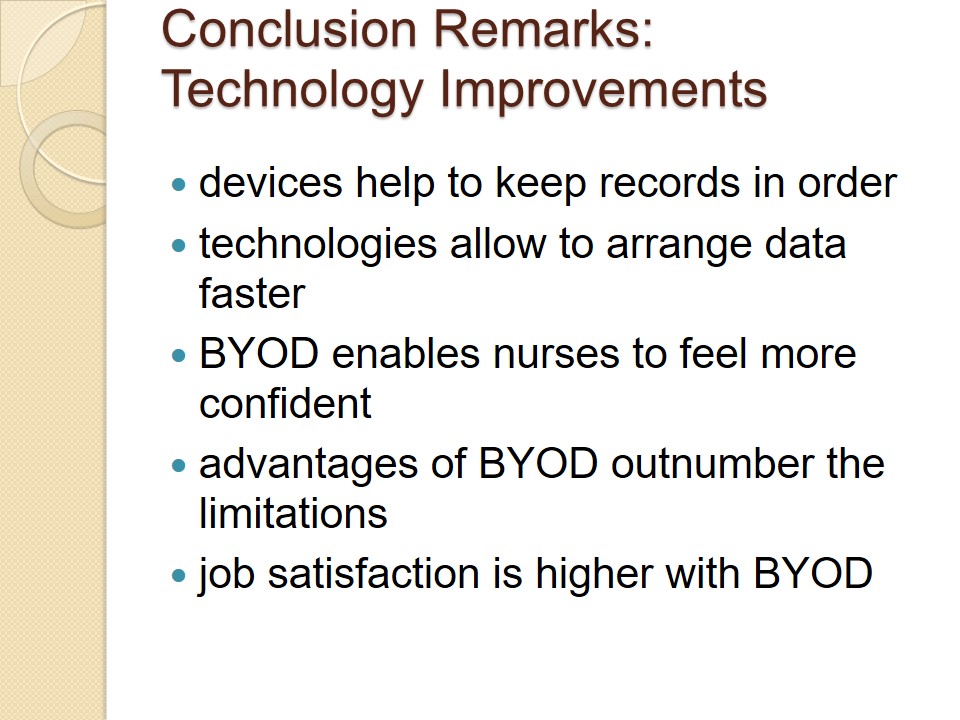
References
Dems, K. (2010). A look at the situational leadership model. Bright Hub. Web.
Guyton, N. (2017). Is it time for BYOD for nurses? Spokwise Healthcare Blog. Web.
Hersey, P., & Blanchard, K. H. (1969). Life cycle theory of leadership. Training & Development Journal, 23(5), 26-34.
Hersey, P., Blanchard, K. H., & Natemeyer, W. E. (1979). Situational leadership, perception, and the impact of power. Group & Organization Studies, 4(4), 418-428.
Hersey-Blanchard situational leadership theory. (2016). Web.
Lorinkova, N. M., Pearsall, M. J., & Sims, H. P. (2013). Examining the differential longitudinal performance of directive versus empowering leadership in teams. Academy of Management Journal, 56(2), 573-596.
McCleskey, J. A. (2014). Situational, transformational, and transactional leadership and leadership development. Journal of Business Studies Quarterly, 5(4), 117-130.
Meier, D. (2016). Situational leadership theory as a foundation for a blended learning framework. Journal of Education and Practice, 7(10), 25-30.
The situational leadership model. (n.d.). Web.
Thompson, G., &Glasø, L. (2015). Situational leadership theory: A test from three perspectives. Leadership & Organization Development Journal, 36(5), 527-544.